
Holistic Indoor Gardening Tips for Small Spaces
Have you ever wished to bring the beauty of nature into your urban living space? Maybe just into a cozy corner of your apartment? In this blog, we'll explore practical tips and creative ideas to turn even the tiniest corners of your home into vibrant, green gardens.
Let's dive in and discover how to bring the embrace of nature into your living space, no matter how small.
Superfood + Nutrient Booster (INDOOR) promotes indoor plant growth and vitality. Helps with nutrient deficiency and provides access to essential micronutrients for optimal health. Also designed to enhance flowering and lush foliage. Easy application for all indoor plants.
Understanding Holistic Indoor Gardening
Indoor gardening isn't just about placing plants inside your home—it's a holistic approach that considers the well-being of both plants and people. Let's understand what holistic indoor gardening means and the various benefits it brings:
Definition of Holistic Gardening
Holistic indoor gardening involves looking at the bigger picture. Instead of merely focusing on the plants, it considers the entire environment. This includes the type of plants you choose, the soil they grow in, the light they receive, and how you care for them. It's creating a harmonious ecosystem within the confines of your home.
How it Differs from Traditional Gardening
Traditional gardening often emphasizes high maintenance and external inputs. Holistic indoor gardening, on the other hand, promotes a more balanced and sustainable approach. It considers the interconnectedness of plants, the environment, and the people living in the space. This approach can lead to a more self-sustaining and rewarding indoor garden.
Benefits of Holistic Indoor Gardening
Holistic indoor gardening offers a range of benefits that go beyond just having greenery in your living space:
- Improved Air Quality: Indoor plants act as natural air purifiers by absorbing pollutants and releasing oxygen. They contribute to cleaner and fresher air, which is especially valuable in urban environments.
- Stress Reduction: Caring for plants has been linked to reduced stress and improved mental well-being. The presence of plants can create a calming atmosphere, providing a natural escape from the demands of city life.
- Enhanced Focus and Productivity: Indoor gardening encourages mindfulness and focus. Taking a moment to care for your plants can be a meditative practice, helping to boost concentration and productivity.
- Connection with Nature: For urban dwellers with limited access to outdoor green spaces, indoor gardening provides a way to connect with nature. It brings the outdoors inside, fostering a sense of tranquility and balance.
- Therapeutic Value: Engaging with plants has therapeutic effects. Whether touching the soil, smelling fragrant herbs, or observing growth, indoor gardening offers a therapeutic and fulfilling hobby.
- Sustainable Living: Holistic indoor gardening promotes sustainability using eco-friendly practices, such as composting, recycling materials, and choosing low-maintenance, locally sourced plants.
Choosing the Right Plants
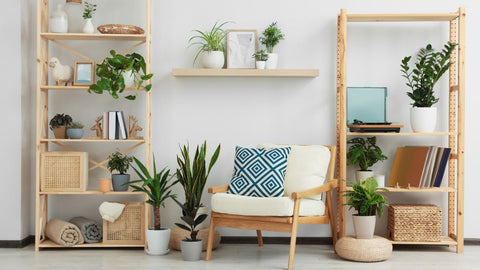
Selecting the right plants is a crucial step in creating a successful indoor garden, especially when space is limited. Here's a detailed guide to help you choose plants that thrive in small indoor spaces:
Low-Maintenance Plants for Indoor Gardening
Choosing plants that don't demand constant attention is essential when working with limited space. Opt for varieties known for their adaptability and ability to tolerate indoor conditions. Examples include snake plants, pothos, spider plants, and ZZ plants. These plants can withstand fluctuations in light and water, making them suitable for busy urban lifestyles.
Plants that Thrive in Limited Space and Sunlight
In small indoor spaces, natural light might be scarce. Select plants that can flourish in low-light conditions, such as peace lilies, philodendrons, and ferns. These plants are well-suited for apartments or rooms with minimal access to sunlight. Additionally, consider herbs like mint, chives, and parsley that can thrive on windowsills, providing beauty and practicality in limited spaces.
Factors to Consider When Choosing Plants
- Size: Choose compact plants that fit well in small containers or hanging pots. Consider the plant's mature size to ensure it will stay within its designated space.
- Water Requirements: Opt for plants with similar water needs to simplify your watering routine. This ensures that all your plants receive adequate hydration without overwatering or underwatering.
- Air Purifying Qualities: Many indoor plants have the added benefit of improving air quality by filtering out pollutants. Look for plants that contribute to a healthier indoor environment, like spider plants, pothos, and peace lilies.
- Aesthetic Appeal: Select plants that align with your aesthetic preferences and complement your indoor decor. This creates a visually pleasing and harmonious indoor garden.
Optimizing Light Conditions

Optimizing light conditions is essential in small spaces with limited natural light. Let's explore how to ensure your plants get the light they need:
Importance of Light for Indoor Plants
Light is fuel for plants; it's essential for photosynthesis, the process by which plants convert light into energy. Inadequate light can lead to stunted growth and poor overall health. Understanding the light requirements of your plants is vital to providing them with the right environment for thriving.
Selecting Appropriate Lighting for Small Spaces
In spaces with limited natural light, consider supplementing with artificial light. LED grow lights are popular choices for indoor gardening. They come in various spectrums that mimic natural sunlight, providing the necessary energy for plant growth. Place the lights strategically to ensure even coverage and adjust the distance based on the specific needs of your plants.
Tips for Maximizing Natural Light
If you're fortunate enough to have access to natural light, make the most of it:
- Know Your Sunlight: Different areas of your home receive varying amounts of sunlight. Identify which areas get the most light and choose plants accordingly. South-facing windows generally receive the most sunlight, while north-facing windows get the least.
- Rotate Your Plants: To ensure all sides of your plants receive adequate light, rotate them regularly. This prevents them from leaning or growing unevenly towards the light source.
- Use Reflective Surfaces: Place light-colored or reflective surfaces near your plants to bounce light back onto the foliage. This can be achieved with mirrors or light-colored walls.
- Keep Windows Clean: Dirty windows can reduce the amount of sunlight entering your space. Regularly clean windows to maximize natural light exposure for your plants.
Smart Space Utilization
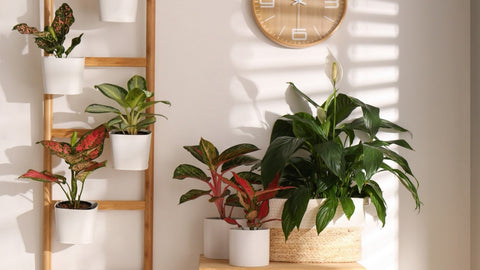
Here are practical tips for optimizing space, ensuring you can have a thriving garden even in small quarters:
Vertical Gardening Techniques
Vertical gardening is an innovative solution for small spaces. Utilize vertical surfaces, such as walls and hanging structures, to grow plants upwards. Consider wall-mounted shelves, hanging planters, or vertical garden kits. This maximizes space and adds an aesthetic element to your indoor garden.
Space-Saving Containers and Planters
Choosing the proper containers is crucial when working with limited space. Opt for compact, stackable containers that fit well on windowsills, countertops, or narrow ledges. Hanging planters and wall-mounted pockets are excellent choices for creating a suspended garden without taking up valuable floor space.
Creative Shelving Ideas for Plants
Incorporate shelves into your indoor garden setup to add more dimension. Floating or ladder-style shelves can hold various plants at different heights. This provides ample room for your plants and an attractive display that transforms your indoor garden into a visually appealing focal point.
Arranging Plants Strategically
Consider the growth habits and space requirements of each plant when arranging them. Place taller plants at the back and shorter ones at the front to ensure all receive adequate light. Group plants with similar care needs together to streamline maintenance routines.
Utilizing Multi-Functional Furniture
Make your furniture work double duty by choosing pieces that can accommodate plants. Select coffee or side tables with built-in planters, or use bookshelves with integrated plant compartments. This way, you're not only adding greenery to your space but also optimizing the functionality of your furniture.
Hanging Gardens for Small Spaces
Take advantage of vertical space by installing hanging gardens. Use ceiling hooks or wall-mounted brackets to suspend planters from above. Hanging gardens are practical and add a decorative touch to your indoor space.
DIY Projects for Small Indoor Gardens
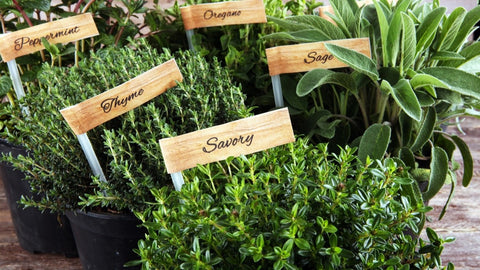
Do-it-yourself (DIY) projects tailored for small spaces add a personal and creative touch to your garden and maximize functionality. Let's explore some creative DIY projects you can embark on:
Building a Compact Herb Garden
Create a dedicated space for fresh herbs with a compact herb garden:
Materials Needed:
- Wooden crates or small containers
- Potting soil
- Herb seeds or starter plants
- Small pebbles for drainage
Steps:
- Fill the crates or containers with potting soil, leaving some space at the top.
- Plant your chosen herbs, spacing them appropriately.
- Add a layer of small pebbles to enhance drainage.
- Place the herb garden on a windowsill or a sunny spot, ensuring it gets enough light.
Creating a Mini Greenhouse
Protect delicate plants and create a microclimate with a mini greenhouse:
Materials Needed:
- Clear plastic storage container with a lid
- Small pots or seed trays
- Potting soil
- Seeds or seedlings
Steps:
- Fill small pots or seed trays with potting soil.
- Plant your seeds or transfer seedlings into the pots.
- Place the pots inside the clear plastic container.
- Close the lid to create a greenhouse effect, trapping warmth and humidity.
This mini greenhouse is ideal for germinating seeds and nurturing young plants in a controlled environment.
Customizing Plant Markers and Labels
Add a personal touch to your indoor garden with custom plant markers:
Materials Needed:
- Wooden or plastic stakes
- Waterproof markers or paint
- Clear sealant (optional)
Steps:
- Cut the stakes into desired lengths.
- Write or draw the names of your plants on the stakes using waterproof markers or paint.
- Allow the markers to dry completely.
- Optionally, apply a clear sealant to protect the writing from moisture.
Designing a Vertical Plant Wall
Maximize vertical space by creating a stunning plant wall:
Materials Needed:
- Wall-mounted shelves or wooden pallets
- Sturdy hooks or brackets
- Small planters or containers
- Potting soil
- Diverse plants suitable for vertical growth
Steps:
- Install wall-mounted shelves or repurpose wooden pallets for vertical placement.
- Attach sturdy hooks or brackets to support the weight of the planters.
- Fill the planters with potting soil and choose plants that thrive in vertical arrangements.
- Arrange the planters on the shelves or pallets, ensuring proper support.
Incorporating Sustainable Practices

Embracing sustainable practices in your indoor gardening benefits the environment and contributes to your plants' overall well-being. Here's how you can make your indoor garden more eco-friendly:
Eco-Friendly and Recycled Materials for Gardening
Choose sustainable materials for your indoor garden:
- Recycled Containers: Opt for containers made from recycled materials or repurpose items like old buckets, crates, or tin cans for planting.
- Biodegradable Pots: Consider using biodegradable pots made from materials like coconut coir or peat. These pots can be planted directly into the soil, reducing waste.
- Natural Fibers: Use natural fibers, such as jute or hemp, for hanging planters or decorative elements. These materials are biodegradable and environmentally friendly.
Composting in Small Spaces
Even in limited space, you can implement composting practices:
- Indoor Compost Bin: Set up a small compost bin for kitchen scraps like fruit and vegetable peels. Consider using a compost bin with a lid to control odors.
- Worm Composting: Vermicomposting is a space-efficient method that turns organic waste into nutrient-rich compost. A small worm bin can be discreetly placed in a corner.
- Compost Tea: Collect nutrient-rich liquid from your compost bin, dilute it with water, and use it as a natural fertilizer for your plants.
Reducing Environmental Impact
Make choices that minimize your environmental footprint:
- Choose Local Plants: Choose plants native to your region or locally sourced. This reduces the environmental impact associated with transportation.
- Rainwater Harvesting: If feasible, collect rainwater for watering your plants. This reduces reliance on treated tap water and conserves resources.
- Conserving Water: Practice water conservation by only watering when necessary and collecting excess water for reuse.
- Energy-Efficient Lighting: If using artificial lighting, opt for energy-efficient LED bulbs. This not only saves energy but also reduces your overall environmental impact.
Holistic Plant Care

A holistic approach to caring for indoor plants involves considering their overall well-being. Let's explore how you can provide comprehensive care for your indoor garden:
Proper Watering Techniques
Watering your indoor plants may seem straightforward, but it requires attention to detail:
- Consistent Moisture: Most plants prefer consistent moisture but don't like sitting in water. Allow the top inch of soil to dry out before watering again. Use your finger to check the soil moisture level.
- Water Quality: Use water at room temperature to avoid shocking your plants. If possible, let tap water sit for a day to allow chlorine to dissipate.
- Deep Watering: Water thoroughly until water seeps out of the drainage holes. This ensures the entire root system receives moisture.
- Observation: Pay attention to your plants. Signs of overwatering include yellowing leaves and soggy soil, while underwatering may result in wilting and dry, crispy leaves.
Prevent & Treat Plant Shock is a natural solution to prevent or treat transplant shock when repotting plants. Facilitates recovery from overwatering. Promotes healthy and vibrant plant growth and supports soil quality for optimal plant nutrition. It is also designed to help with root development and plant vitality. Ideal for all plants.
Self-Watering Systems for Busy Urban Dwellers
For those with busy schedules, self-watering systems can be a game-changer:
- Self-Watering Pots: These pots have a reservoir at the bottom that provides a steady water supply to the plant. They are handy for plants with consistent moisture needs.
- Capillary Mats: Placing capillary mats between the pot and a water source allows plants to absorb water as needed. This is a low-maintenance option for busy individuals.
- Aqua Globes or Spikes: These devices slowly release water into the soil over time, providing a consistent water supply for your plants.
Tips for Maintaining Optimal Humidity Indoors
Indoor environments, especially in urban areas, can have low humidity levels. Here's how to maintain an ideal humidity range for your plants:
- Grouping Plants: Grouping plants together creates a microclimate with higher humidity as they release moisture through transpiration.
- Trays with Water: Place trays filled with water and pebbles near your plants. As the water evaporates, it increases humidity around the plants.
- Humidifier: Consider using a humidifier, especially during the dry winter months. This is particularly beneficial for tropical plants that thrive in high humidity.
- Misting: Lightly misting your plants can temporarily increase humidity. However, avoid excessive misting, as it may lead to fungal issues in certain plants.
Pest Management Without Harmful Chemicals
Keep your plants healthy by managing pests naturally:
- Beneficial Insects: Introduce beneficial insects like ladybugs or predatory mites to control common indoor pests. These natural predators can help maintain a balanced ecosystem.
- Neem Oil: Neem oil is an effective and natural pesticide. Dilute it with water and spray it on your plants to combat pests while being gentle on the environment.
- Homemade Pest Sprays: Create pest control solutions using ingredients like garlic, soap, or chili peppers. These homemade sprays can deter pests without resorting to harsh chemicals.
Natural Plant Protection promotes natural pest control and protects against damage from pests, such as spiders, insects, and bugs. It's useful as a protective barrier and supports healthy plant growth. Easy to use for indoor and outdoor plants.
Companion Planting for Natural Pest Control
Enhance your indoor garden's resilience by strategically placing companion plants:
- Marigolds: Marigolds release a scent that repels many common pests. Plant them alongside your other indoor plants as a natural pest deterrent.
- Basil: Basil not only adds flavor to your meals but also repels certain insects. Plant it near susceptible plants to ward off pests.
- Lavender: Lavender has aromatic properties that repel moths, flies, and mosquitoes. Consider placing lavender near windows or entrances to discourage pests.
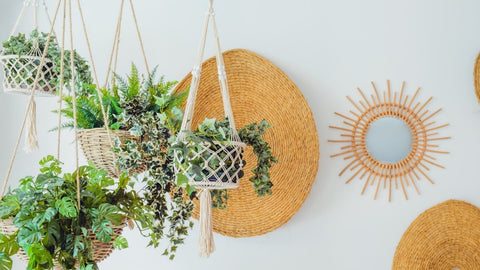
The Bottom Line
And there you have it – a holistic guide to cultivating your indoor garden in limited spaces. We've covered everything from choosing the right plants to incorporating DIY projects and sustainable practices. Remember, indoor gardening is not just about the plants; it's a mindful and rewarding experience that benefits you and your plants.
May your indoor garden flourish, bringing a touch of nature to your everyday life. Happy gardening!

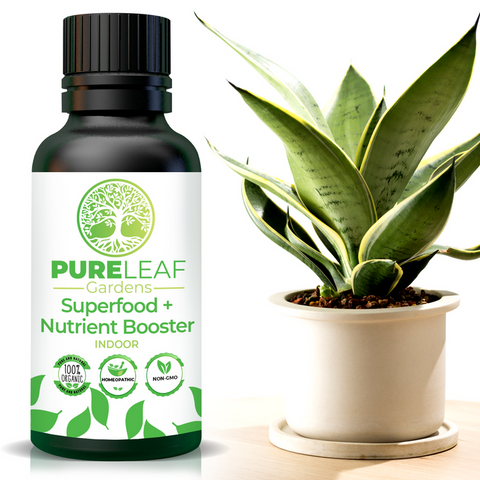

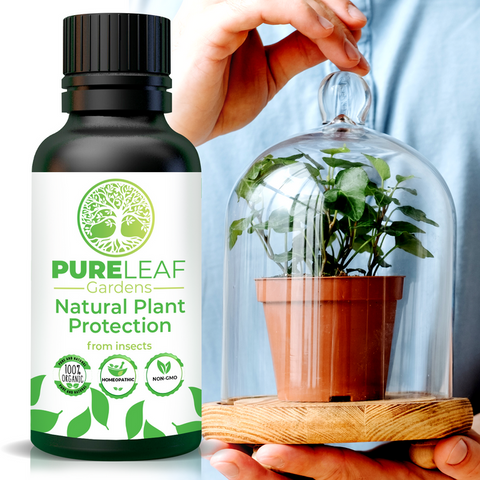
Leave a comment